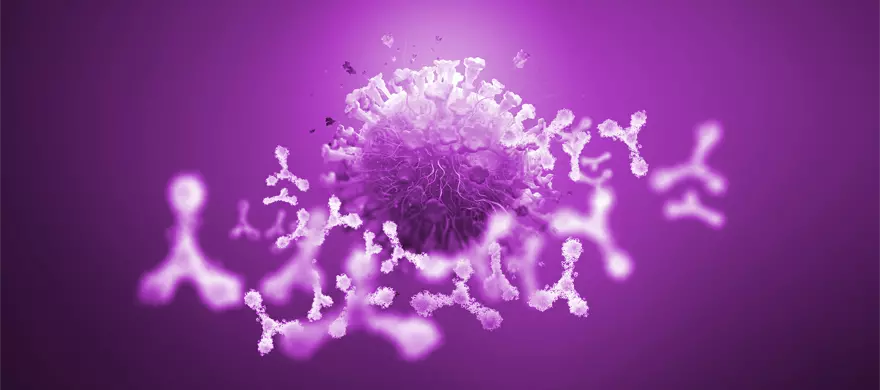You have no items in your shopping cart.
Coronavirus Variants
Prior Coronaviruses
At the beginning of 2003, the first severe coronavirus with pandemic potential emerged from China and spread to several other countries. Severe Acute Respiratory Syndrome (SARS) had a case fatality of an estimated 3%, but transmission networks were interrupted and the spread of the virus halted. Nine years later, Saudi Arabia reported their first case of an even deadlier severe coronavirus, named the Middle Eastern Respiratory Syndrome Coronavirus (MERS-CoV) which claimed the lives of 30-40% of all individuals infected with the virus. While transmission of MERS-CoV has not completely halted, the level of transmissibility of MERS-CoV is low and relatively contained to particular regions.
While SARS-CoV-1 and MERS-CoV produce severe disease and mortality, the coronavirus family contributes several strains to the more mild-to-moderate common cold globally. Hundreds of coronaviruses circulate between animal and human hosts, but the four most common human coronaviruses (HCoVs) are referred to as HCoV-NL63, HCoV-OC43, HCoV-HKU1, and HCoV-229E. These four coronaviruses circulate on a seasonal cycle that differs between regions and most individuals contract at least one of these four seasonal coronaviruses by the age of 5.
Major SARS-CoV-2 Variants
SARS-CoV-2
Just seven years after the first MERS-CoV case was reported in Saudi Arabia, China reported a novel severe coronavirus, named SARS-CoV-2, that was causing severe disease, now named Coronavirus Disease 2019 (COVID-19). This initial strain is considered the “wild-type” variant.
SARS-CoV-2 Alpha/B.1.1.7
In the fall of 2020, several mutations were reported in regions of the SARS-CoV-2 viral proteins and these variants began circulating globally, and thus a classification system was created. One particular variant, originally reported in the United Kingdom, emerged with a large number of mutations in the spike surface protein that appeared to alter transmissibility and mortality. This variant was deemed the Alpha variant, or B.1.1.7 lineage.
SARS-CoV-2 Beta/B.1.351
Independent of the B.1.1.7 lineage, another viral strain emerged with a different set of spike mutations and was first reported in South Africa. The Beta strain has been detected in multiple countries worldwide, suggesting widespread transmission similar to that seen in prior variants. Some reports suggest the mutations reported in B.1.351 may affect monoclonal or polyclonal antibody neutralization.
SARS-CoV-2 Gamma/P.1
First identified in Brazilian travelers in Japan, the Brazilian P.1 lineage was also reported in the fall of 2020. This lineage has 17 unique mutations, including three within the receptor binding domain (RBD) region of the spike protein. Some of these mutations are identical across the alpha and beta lineages. The Gamma variant has been reported to have altered transmissibility and neutralization profiling, which may result in decreased protection acquired by natural infection or vaccination.
SARS-CoV-2 Delta/B.1.617.2
One of the two current major variants of concern (as of January 2022), the Delta variant has been reported to have increased transmissibility and reduced antibody neutralization by post-vaccination sera. This strain, first identified in India, rapidly dominated new infections globally due to its altered transmission profile and relaxing of protection measures in some regions. The mutations acquired in the Delta variant have resulted in greater than two-fold transmissibility.
SARS-CoV-2 Omicron/B.1.1.529 (BA.1+)
Another major variant of concern, named the Omicron variant, was also first reported out of South Africa. The number of mutations acquired in the Omicron variant increased exponentially when compared with the concurrently-circulating Delta variant. These mutations have been suggested to increase transmissibility significantly and reduce the effectiveness of antibody therapies and neutralization by post-vaccination sera. Of special note, the Omicron variant is considered a family of variants, composed of various BA lineages. Initially, the BA.1 dominated viral sequences globally in early 2022. A newer sublineage, the BA.2 lineage, began gaining traction in several countries, overtaking the BA.1 lineage by greater than 50% of all viral sequences reported in some countries. Currently, studies suggest the BA.2 lineage is significantly more transmissible but has not yet been demonstrated to induce more severe disease than BA.1. Research is still underway on the various BA lineages as of now, and the currently understood virus profiles may develop as new research is published.
If you or your research group is conducting studies on any of the coronavirus variants, Biorbyt has a variety of reagents to support your research. If a reagent of interest is not currently available for purchase on our site, please reach out to Biorbyt support ([email protected]) to discuss your projects’ needs.

